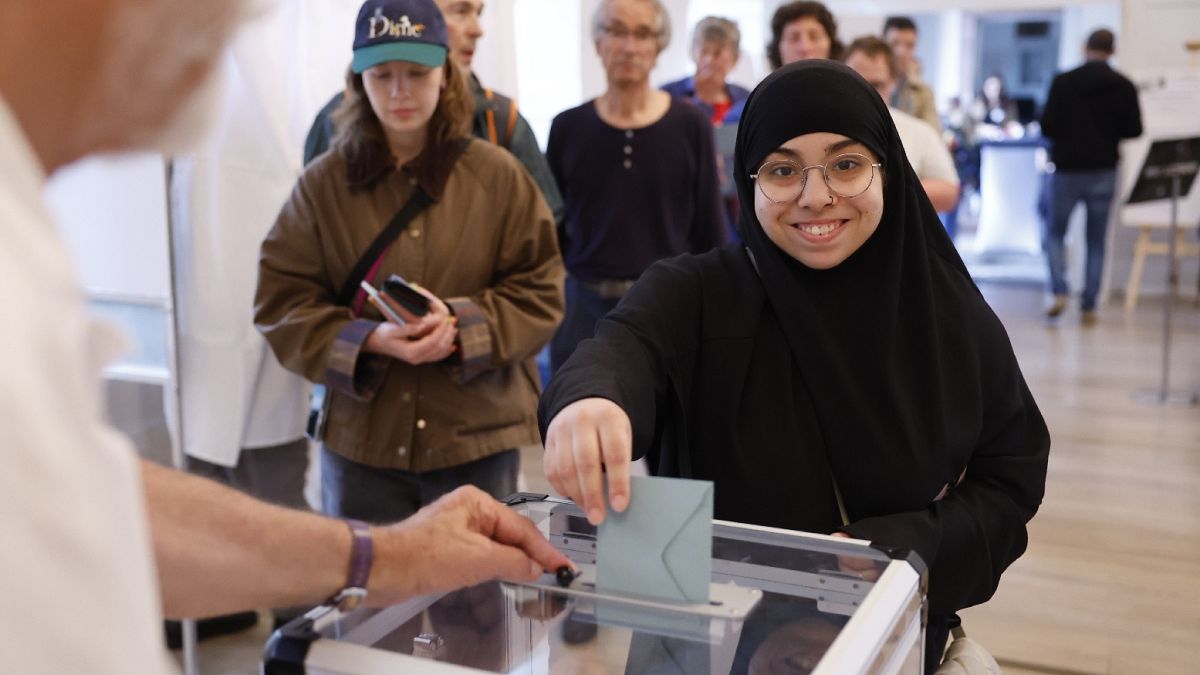A new survey broke down the demographics of how French people voted in the legislative poll.
The first round of the snap legislative elections in France on Sunday was marked by high turnout and a record result for the far-right National Rally (RN).
Nearly 67% of France’s 49.5 million voters cast a ballot, a level not seen since the late 1990s. The RN clinched 33% of the vote and could, come next Monday, dominate the National Assembly and possibly take control of the government.
The left-wing New Popular Front (NFP) came in second with 29% of the vote while the centrist coalition of French President Emmanuel Macron endured its second crushing electoral defeat in under a month by coming in third having enticed just over a fifth of voters.
The results for the RN and the centrist Ensemble coalition are very close to the results they secured three weeks prior in the European elections which led Macron to dissolve the assembly and call the snap elections.
So who did the various parties manage or fail to attract?
The young vote
According to Ipsos, which surveyed over 10,200 voters in the days preceding the first round to break down the demographics of the ballot, the RN secured the most votes in all age groups except people under the age of 34 and over 70.
The highest share of the senior vote (32%) went to Macron’s Ensemble coalition but the centre faired very poorly with young people who instead primarily voted for NFP. Up to 48% of the 18-to-24-year-old vote went to the left-wing coalition, the Ipsos survey found.
“One of the keys to Emmanuel Macron’s success was to attract young people in 2017, firstly because he embodied a form of political and generational renewal,” Frédéric Michaud, Deputy Managing Director of pollster OpinionWay, told Euronews.
“But he got older and, above all, there’s a much younger incarnation than him now, Jordan Bardella,” Michaud said, which partly explains the RN’s appeal.
The far-right party came second in the youth vote, securing about a third of both the 18-to-24 and 25-to-34 age groups.
Bardella has a strong following on social media, in particular on TikTok, where he is more likely to be seen rubbing shoulders or drinking beers with voters, and sharing random thoughts in “behind the scenes” videos than breaking down actual RN policies.
“For [the hard-left] France Unbowed (LFI) and the New Popular Front (NFP), generally speaking, this is a little more classic. These are votes that more traditionally attract young people than other electoral options,” Michaud said.
The popular vote
A majority (54%) of people who self-identify as “disadvantaged” overwhelmingly backed the RN, according to Ipsos. The far-right party also secured the highest share of the “popular” class’ vote (38%), scoring three percentage points ahead of the left-wing coalition.
Most voters who said they barely make ends meet or rely on savings and/or loans to get by (41% and 46% respectively) also backed the RN ahead of its left-wing rivals.
This is a dynamic that has been growing over the past decade, Michaud told Euronews, due in part to “a feeling of abandonment and betrayal” the left-wing electorate feels towards the Socialist Party which helmed the country between 2012 and 2017 with the presidency of François Hollande.
Macron is also not unscathed from this as he was Hollande’s adviser at the beginning of the mandate before spending two years as economy minister. His policy since taking over at the Elysée has largely been seen as a continuation of the work he started at the ministry with reforms aimed at cutting red tape for businesses, pushing back the pension age and abolishing the wealth tax.
This has made the left-wing electorate more receptive to the RN’s messaging “which has been able to talk about purchasing power, about their day-to-day concerns, particularly in terms of security,” Michaud said.
The protest vote
Unsurprisingly, a majority of voters who declare themselves satisfied or very satisfied with Macron voted for his centrist coalition, the Ipsos survey found.
But a third of those who said they were dissatisfied with him favoured the NFP, while a majority (53%) of those who felt very dissatisfied chose the RN.
So were people protesting the RN or voting to support them?
“It’s both,” the OpinionWay’s Michaud told Euronews. “The National Rally has long been the tool of sanction against the power in place, of the expression of anger, of a protest in any case.”
“It still exists but we are seeing more and more support votes … so it’s not just a way of opposing, it’s also a choice of ideological adherence to the different measures that are proposed by Jordan Bardella’s party,” he added.

